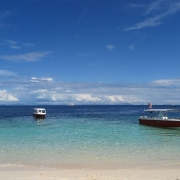What caused Japan’s economic miracle?
Topic of Study [For H2 History Students]:
Paper 1: Understanding the Global Economy (1945-2000)
Section B: Essay Writing
Theme II Chapter 1: Reasons for growth of the global economy
Historical Context: What is the “Japanese Economic Miracle”?
It refers to the period from 1945 to 1991 where Japan experienced rapid economic growth. Following the end of World War Two (WWII), Japan’s infrastructure was severely devastated by the bombing campaigns. Millions were unemployed. There was high inflation. However, USA chose to oversee the post-war recovery of Japan.

Under the auspices of the Supreme Commander of the Allied Powers (SCAP), General Douglas MacArthur, Japan received substantial financial aid and assistance to rebuild its economy. This was carried out after the signing of the Treaty of Peace with Japan (also known as the Treaty of San Francisco) on 8 September 1951 that marked the end of Japan’s imperialism and the start of a US-Japan allied relationship.
1. Role of the USA: Dodge Line, foreign aid and the rise of Keiretsu
The president of Detroit Bank Joseph Dodge introduced economic stabilisation plans to lower inflation rates in Japan. This was known as the “Dodge Line” stabilisation in 1949. One of the key points in the policy was to fix the exchange rate to 1 USD to 360 Yen. With stable exchange rates, Japanese export prices could be kept low and competitive.
Following the start of the Korean War on 25 June 1950, USA launched the “direct procurement” program that enabled the US forces to purchase wartime supplies from Japan directly. For instance, the US army bought processed food, disinfectants and medical syringes from Japan. Industrialised firms like Toyota also gained from this favourable climate as it exported trucks to support the American military efforts in Korea.
Another US-guided reform was the breakup of the Zaibatsu, which were big businesses (Sumitomo, Mitsubishi and Mitsui) that supported Japanese militarism during WWII. Instead, these companies became a new form of firms, known as the keiretsu. It refers to a group of companies that have interlocking business relationships. In the subsequent years, these companies became the key pillar of the Japanese economic miracle.
2. Role of the Japanese Government: MITI and EOI
In addition to the support provided by USA, the Japanese government established the Ministry of International Trade and Industry (MITI) in May 1949. Its purpose was oversee the conduct of industrial policies through cross-agency coordination.
The MITI identified sectors that yield large economic potential and channel state resources to nurture the relevant industries. The government then implemented protectionism (use of artificial trade barriers to limit the inflow of foreign goods) to accelerate the growth of domestic firms. Over time, the government facilitated the dominance of the keiretsu.
Under the leadership of Japanese Prime Minister Hayato Ikeda, the early 1960s marked the start of the export-oriented industrialisation (EOI). By 1970, Japan was one of the world’s largest producers of ships and cars.
3. Significance of Culture: Industriousness and Frugality
Similar to South Korea, the Japanese were known for their high level of self-discipline. Due to their willingness to work and support their employers, many firms benefited from the increased labour productivity. This hard work ethic can be traced to the shared hardship experienced by the citizens during wartime. Therefore, the Japanese firms maintained strong employer-employee relations.
Additionally, many households in Japan had large domestic savings. This meant that banks had greater sources of financing to support the business activities of firms. The government capitalised in this frugal nature of the citizens by offering lower interest rates so that firms were incentivised to take loans and support the growth of the economy.
What can we learn from this article?
Consider the following question:
– Assess the importance of the government in causing the Japanese economic miracle [to be discussed in class].
Sign up for our JC History Tuition and learn how to consolidate your knowledge for effective essay writing. Our online learning programme also features essay discussion and class practices. Through a step-by-step learning approach, you will be more aware of the critical steps to take in analysing and answering questions for GCE A Level History examinations.
The H2 and H1 History Tuition feature online discussion and writing practices to enhance your knowledge application skills. Get useful study notes and clarify your doubts on the subject with the tutor. You can also follow our Telegram Channel to get useful updates.
We have other JC tuition classes, such as JC Math Tuition and JC Chemistry Tuition. For Secondary Tuition, we provide Secondary English Tuition, Secondary Math tuition, Secondary Chemistry Tuition, Social Studies Tuition, Geography, History Tuition and Secondary Economics Tuition. For Primary Tuition, we have Primary English, Math and Science Tuition. Call 9658 5789 to find out more.













